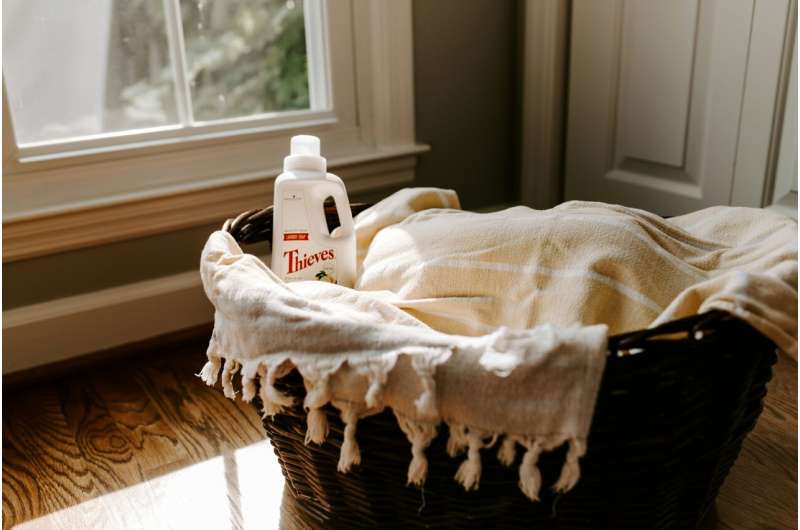This article has been reviewed according to Science X's editorial process and policies. Editors have highlighted the following attributes while ensuring the content's credibility:
fact-checked
trusted source
proofread
Researchers call for renewed safety efforts to protect children from liquid laundry detergent poisoning

A new study conducted by researchers at the Center for Injury Research and Policy of the Abigail Wexner Research Institute at Nationwide Children's Hospital and the Central Ohio Poison Center investigated trends in calls to poison centers across the country for exposures to liquid laundry detergent packets.
The study investigators identified declines in the number, rate and severity of liquid laundry detergent packet exposures among children younger than six years. However, the exposure burden remained high. Additionally, exposures have increased among older children, teens and adults.
The study, published in Clinical Toxicology, found that in the most recent three years of the study, U.S. poison centers received 36,279 calls related to liquid laundry detergent packet exposures—an average of one call every 44 minutes.
Most exposures involved children younger than six years (87%), a single substance (97%) or occurred at a residence (99%). Approximately 6% of single-substance exposures resulted in serious medical outcomes. During the study period, there were nine deaths associated with the ingestion of laundry detergent packets. All nine fatalities involved adults, seven of whom were older than 70 years.
According to previous research, in an effort to reduce unintentional exposures to the contents of liquid laundry detergent packets, ASTM published a voluntary Standard Safety Specification for Liquid Laundry Packets in 2015, but some experts feel it did not go far enough.
Recent updates to the standard in March 2022 did not substantially change its scope. Multiple opportunities exist to strengthen the ASTM standard, including requiring Poison Prevention Packaging Act-compliant packaging or adopting additional "layers of protection," such as individual packaging of each laundry packet.
"The voluntary standard, public awareness campaigns, and product and packaging changes to-date have improved the safety of these products, but a high number of children are still exposed each year," said Christopher Gaw, MD, senior author of the study, emergency medicine physician and faculty of the Center for Injury Research and Policy at Nationwide Children's. "There is still room for improvement."
One reason for the less-than-expected decline in exposures among young children is likely because the voluntary safety standard permits manufacturers to meet the requirement for child resistant containers in six different ways rather than requiring them to conform to the Poison Prevention Packaging Act (PPPA) of 1970, which has been shown to be highly effective in preventing child access to poisons.
"Requiring that all liquid laundry detergent packet packaging be PPPA-compliant would be an important next step in reducing child access to these products," said Gary Smith, MD, DrPH, co-author of the study and director of the Center for Injury Research and Policy at Nationwide Children's.
"In addition, each laundry packet should be individually wrapped with child-resistant packaging, which would provide important layers of protection for this highly toxic product."
Liquid laundry detergent packets are more toxic than traditional liquid and powder laundry detergents. The reasons for this increased toxicity are not completely understood, and further research is needed to determine how to make packet contents less toxic. Such reformulation would reduce the severity of exposures to liquid laundry detergent packets.
Pediatricians and other health care providers should continue to counsel patients and their families about the hazards of laundry detergent packet exposures and the importance of safe storage practices. Experts recommend that caregivers to children younger than six years old and adults with a history of dementia, Alzheimer's disease or developmental disability use traditional laundry detergents instead of packets.
"Many families don't realize how toxic these highly concentrated laundry detergent packets can be," said Dr. Gaw. "If you have young children or vulnerable adults in your home, using traditional laundry detergents is a safer alternative."
Data for this study were obtained from the National Poison Data System (NPDS), which is maintained by America's Poison Centers, formerly the American Association of Poison Control Centers (AAPCC).
More information: Alice M. Zhang et al, Longitudinal trends in liquid laundry detergent packet exposures: 2014–2022, Clinical Toxicology (2023). DOI: 10.1080/15563650.2023.2287977
















